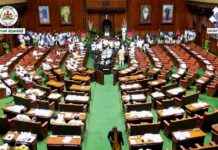President Trump and Irish Prime Minister Micheál Martin recently met to discuss the US-Ireland trade deficit, shedding light on the ongoing global trade imbalances. Trump, known for his strong stance on trade, emphasized the need to address the trade gap with Ireland, hinting at potential tariffs on other nations to rectify the situation. Despite the usual jovial atmosphere surrounding the visit of Ireland’s premier for St. Patrick’s Day, trade tensions took center stage during the meeting at the White House.
During the meeting, Trump specifically pointed out Ireland’s reliance on corporate tax revenues and its export-driven economic growth. He highlighted the strategic advantage Ireland took by attracting pharmaceutical companies away from previous US administrations, framing it as a contributing factor to the trade deficit. These remarks underscored the complex dynamics of international trade and the competitive strategies employed by different countries to bolster their economies.
Challenges and Vulnerabilities of Ireland’s Export-Heavy Economy
The meeting between Trump and Martin also brought to the forefront the challenges faced by Ireland’s export-heavy economy, particularly in light of the US president’s trade policies. With a significant portion of its exports comprising medical and pharmaceutical products, Ireland has experienced record export levels in recent years. However, the looming threat of reciprocal tariffs from the US poses a serious concern for the country, as it navigates the intricate web of global trade relations.
Ireland’s status as a key hub for technology companies and pharmaceutical giants further complicates its position in the face of potential tariffs and trade barriers. The country’s economic success, fueled by export growth and foreign investment, has made it a target for criticism regarding its taxation policies and trade surplus with the US. Trump’s administration has signaled its intent to address these issues through reciprocal tariffs aimed at leveling the playing field for American exports.
Implications of Trump’s Trade Policies on Global Economic Landscape
The broader implications of Trump’s trade policies extend beyond the US-Ireland trade relationship, encompassing a wider strategy to reshape global trade dynamics. By targeting long-standing US partners with tariffs and trade restrictions, Trump aims to bolster domestic industries and create job opportunities within the US. However, this approach has raised concerns among US allies and trading partners, including Ireland, who fear the impact of retaliatory measures on their economies.
The upcoming unveiling of reciprocal tariffs in April signifies a critical juncture in Trump’s trade agenda, as he seeks to counter trade barriers imposed by other nations on American imports. The inclusion of the European Union in Trump’s trade rhetoric underscores the broader scope of his ambitions to address what he perceives as unfair trade practices. As the US prepares to implement new tariffs and navigate the complexities of international trade negotiations, the global economic landscape remains in a state of flux.
In conclusion, the meeting between President Trump and Prime Minister Martin underscored the intricate interplay of trade dynamics between the US and Ireland, highlighting the challenges and vulnerabilities inherent in the current global trade environment. As both countries grapple with the implications of evolving trade policies and escalating tensions, the future of their economic relationship remains uncertain. Stay tuned for further developments on this front as the US-Ireland trade saga continues to unfold.


























